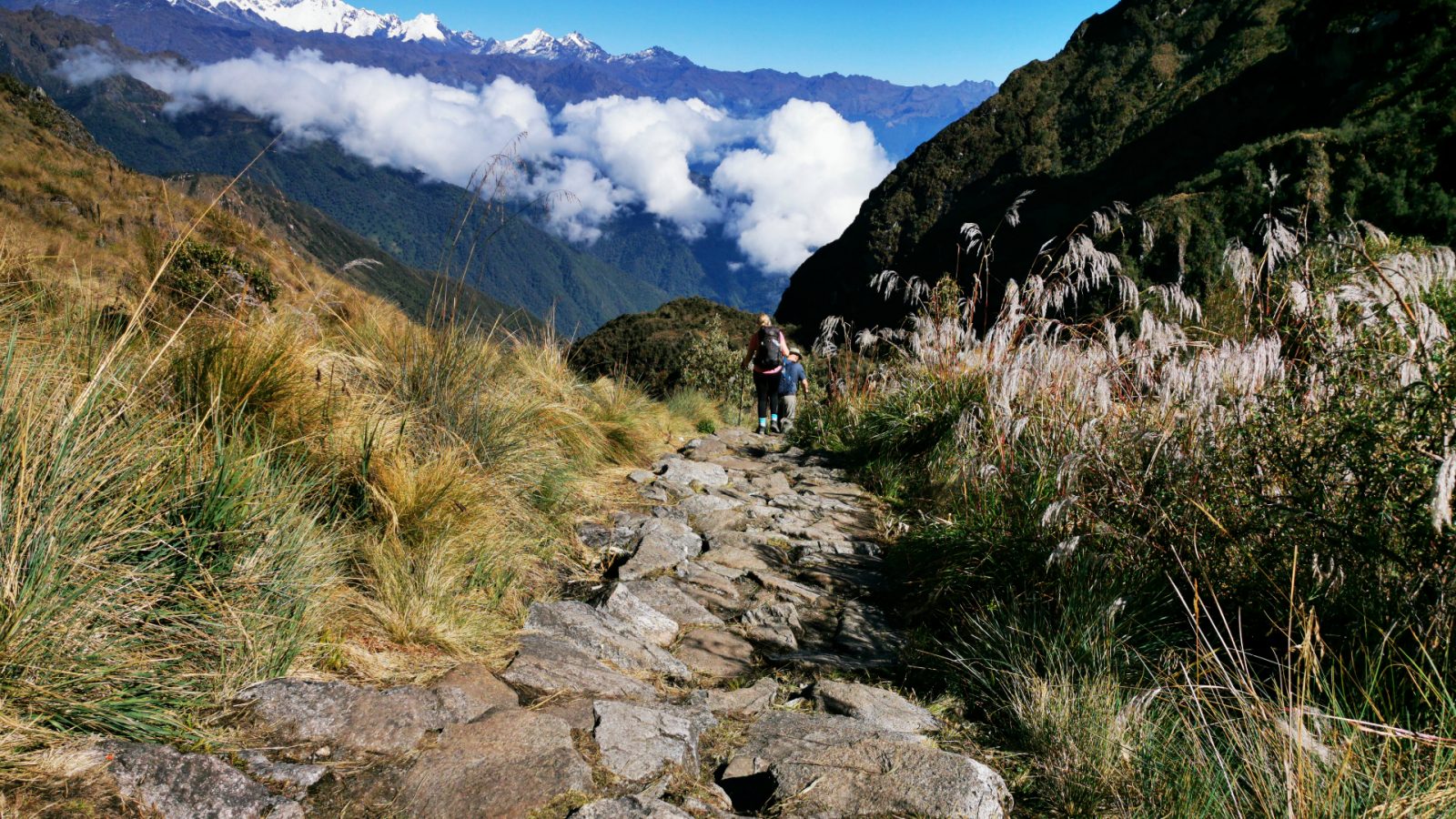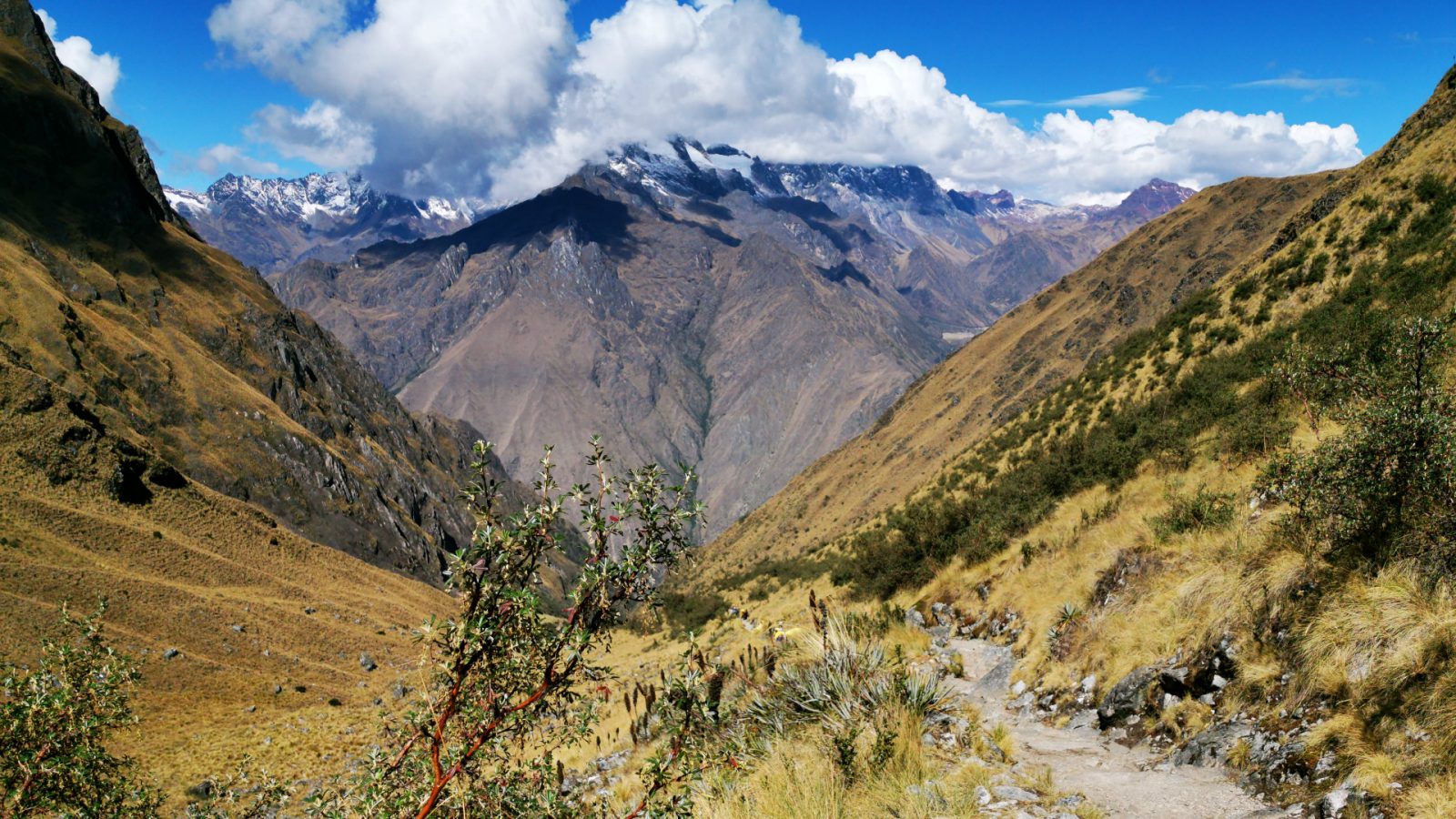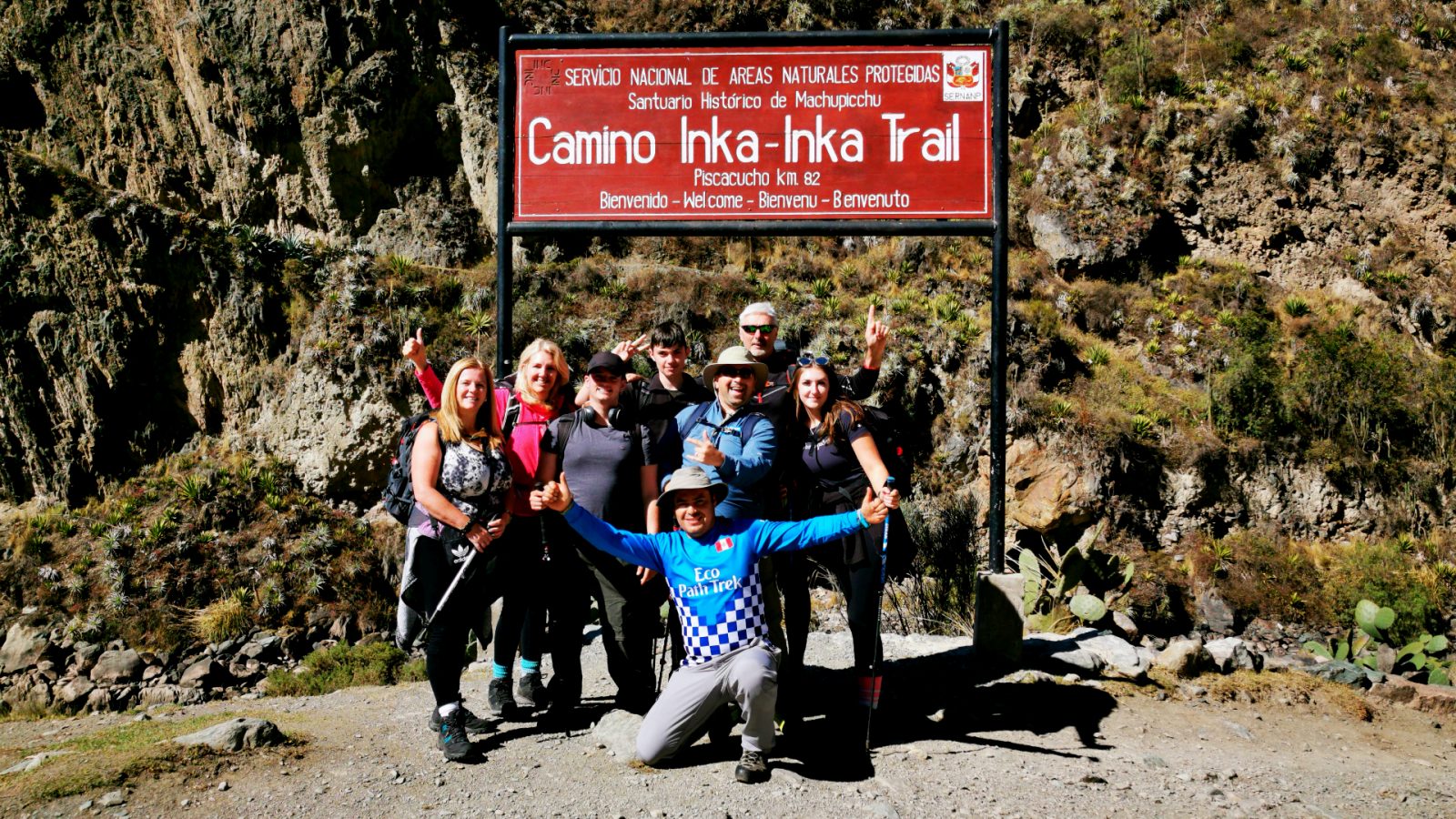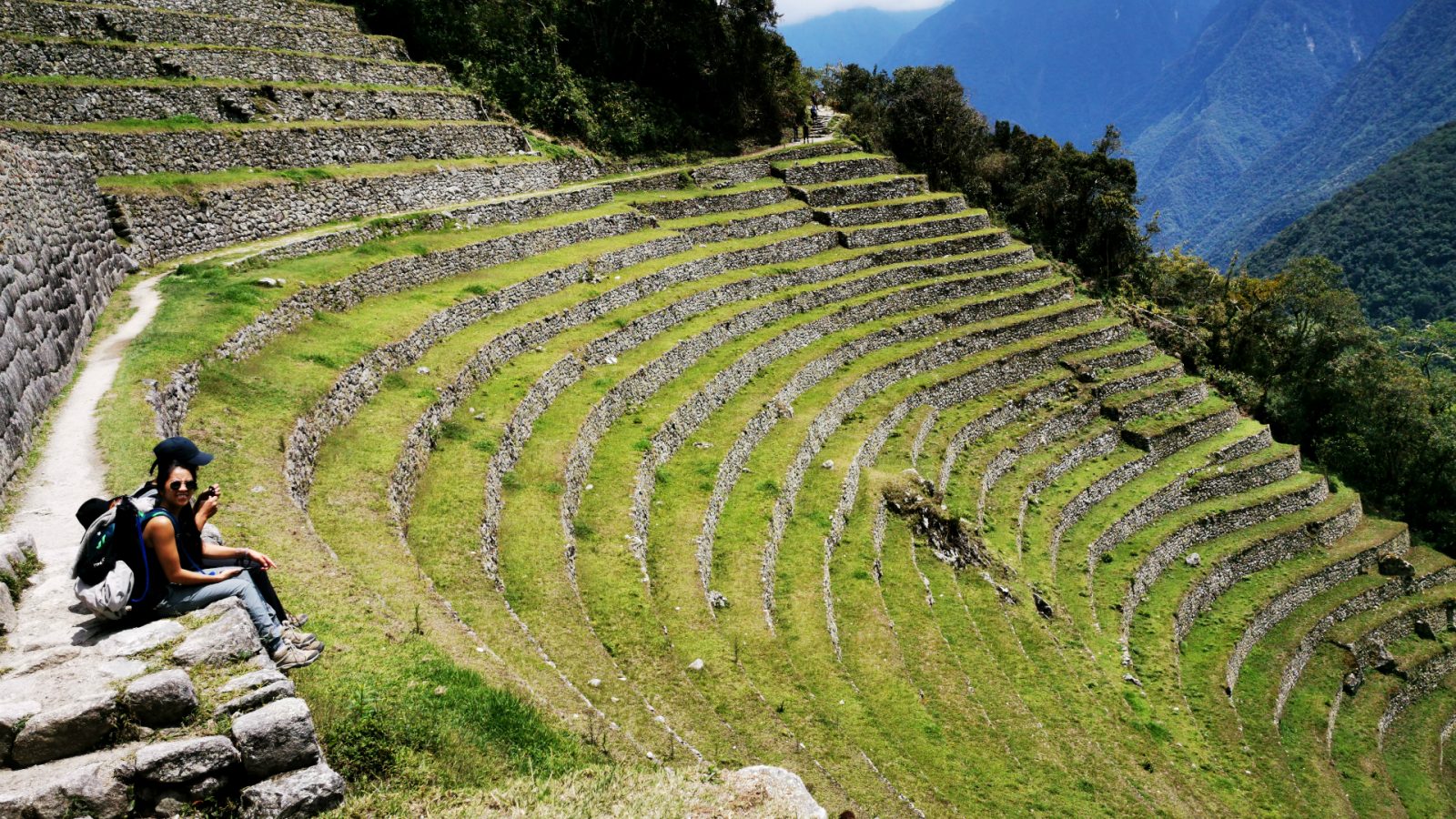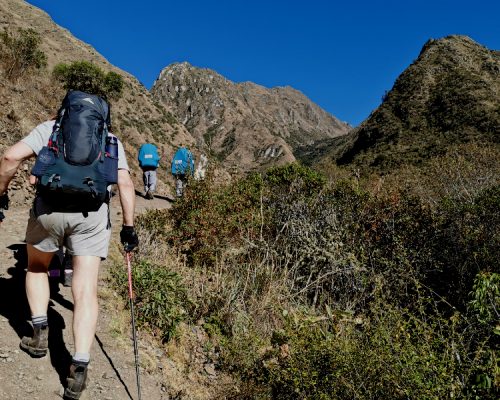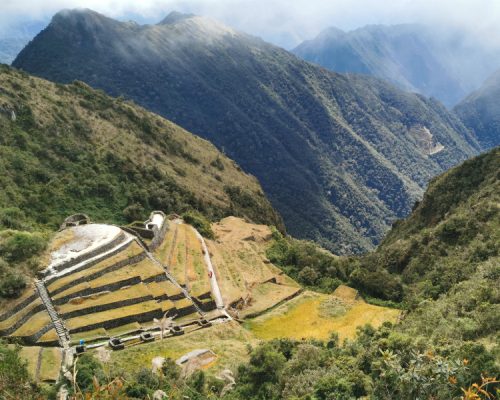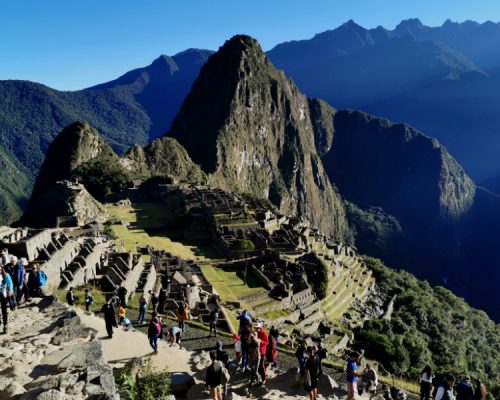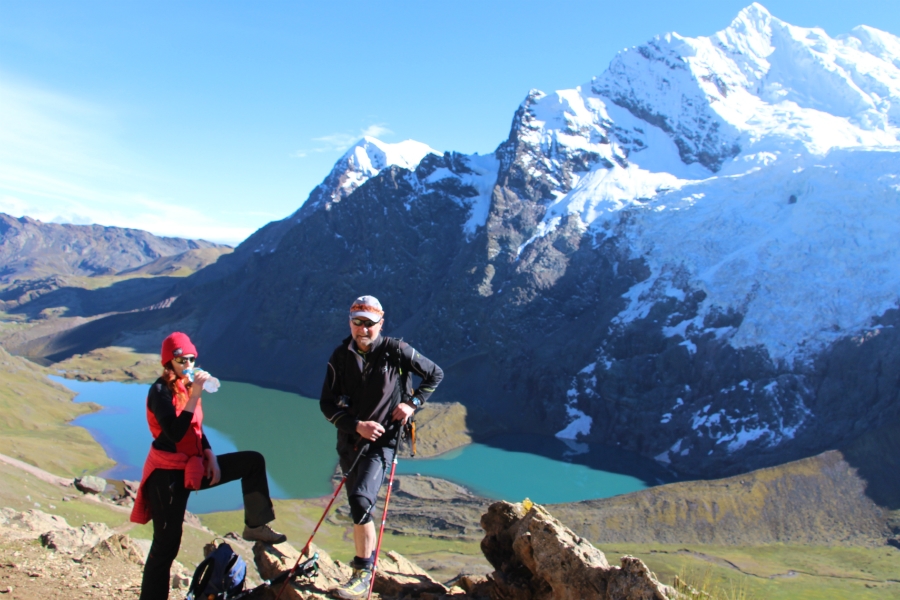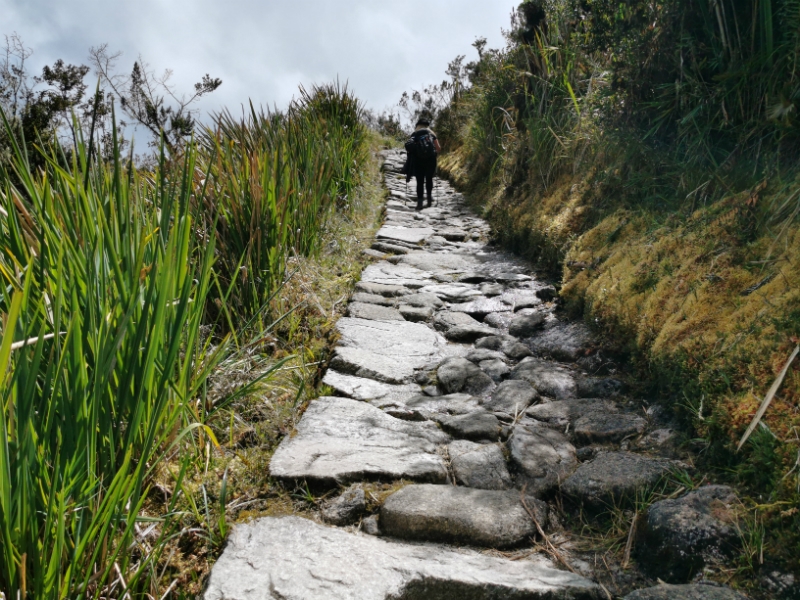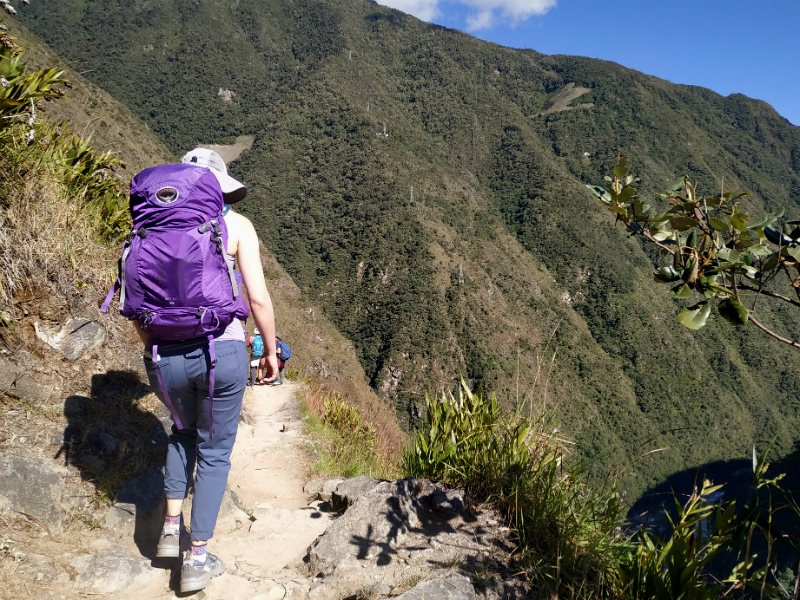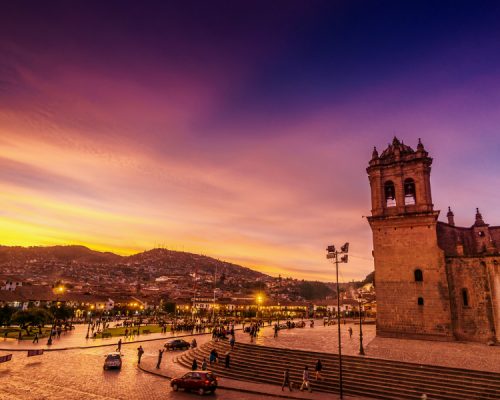CLASSIC INCA TRAIL 4 DAYS FAQ
- A.- BEFORE YOU GO
- B.- ON THE TREK
- C.- BOOKINGS & RESERVATION
1.- BEFORE YOU GO:
Where are the Departure points for the classic inca trail ?
The pick up is from your hotel in Cusco at 05:00 am , please provide a clear contact details of your accommodation at your check-in in the Cusco office.
Arrival to Cusco and check in at the Cusco ECO PATH TREK office
We assume most people try to arrive to Cusco 2-3 days before the trek to allow adequate time for acclimatisation and a buffer in case of transport delays. Once you have settled in and rested you must come to the Cusco office to view and reconfirm the information we have pertinent to your trek, personal requirements and sign the conditions ( even if you have already paid in full.) There are occasions when local holidays or unrest may require last minute changes to departure times or some additional information.
Where can I store my luggage while I am on the Classic inca trail ?
On the trek/tour, you should only bring with you the things you really want/need and leave the rest of your things in your hotel in Cusco.
What should I pack for the classic inca trail ?
- Good rain gears
- Hiking shoes
- Hat
- gloves
- 4 pairs of socks
- Trekking poles
- sunglasses
- Mosquito repellent
How much does the sleeping mat and sleeping bag weigh?
- Sleepmat weight = 1 kg aprox.
- Seeping bag weight = 2-5 kg aprox.
I am on my own, will I have someone to share a tent with?
Yes another person of the same sex , or if you prefer you can pay a single supplement for a tent just for you. This is US$ 70 (For the entire trek)
Will I need any extra money?
YES, so that you can take part in options such as bottle water/drinks, tips for your trekking staff, souvenirs, snacks in Machupicchu, etc. You should take at least 500 soles as emergency money. Also, for the passengers that are concerned about health, it may be prudent on your part to keep in mind that a train ride from Ollantaytambo to Aguas Calientes costs approx US$50-80 (in the case you need to leave the trail early).
Do the guides speak English?
Yes all our tour guides speak very well the English, mostly of then have studied in th university of Cusco, aslo are Archeologist, Biologist, and the most important are really funny guys. How many people will be in my group? We work with small groups, we use to have 4 to 8 persons per tour guide. If there are more persons we will add another tour guide. Our staff for a group of 8 passengers are: 1 cook, 1 kitchen assistant, 1 head porter, 5 porters. Should I hire an extra porter? If you have not trekked in altitude before we would suggest your organise the extra porter. Unless you have hired an extra porter you will need to carry your day pack.
- The half porter who will carry only 7 kg cost $70.00 USD for all the trip
- A full porter who will carry 14 kg cost $ 120.00 USD for all the trip
ECO PATH TREK provide a duffle porter bag at the briefing the day before your hike. You should bring only what you absolutely need/want on the trek, and store the rest of your belongings in Cusco.
2.- ON THE TREK
I am not really an experienced trekker?What if I can’t keep up? How difficult is the Inca Trail?
Most people have that concern but don’t worry. Only in extremely rare circumstances does a passenger need to come back early. You just need to remember that you are able to go at a speed that is comfortable for you. Take your time, pace yourself, and enjoy. The Inca Trail is considered a moderate hike. It’s not a technical hike but there are a lot of Inca stairs to walk up and down, and the altitude may affect some individuals. We recommend using a trekking poles and have an early night before the trek.
Are Trekking poles really necessary?
For this trek more than any of the treks, we recommend the use of Trekking poles, especially for those passengers with known knee problems. There are multiple times during the trek that a Trekking poles is handy, be it ascending a mountain or walking down immense sets of Inca stairs. It will help with your balance and reduce the impact on your knees.
How long will I be walking every day? How long is the classic inca trail?
This is an approximate breakdown according to our regular campsites:
- Day 1: 11 kilometers (6.8 miles) 5-6 hours.
- Day 2: 12 kilometers (7.4 miles) 7-8 hours (“Dead Womans Pass,” the highest pass of the trek at 4,200m, is on this day )
- Day 3: 16 km (9.9 miles) 7-8 hours. Its the longest day of the trail
- Day 4: 6 Km (3.7 miles ) 6-5 hours
The entire trail is about 42 kilometers (26 miles) long from start to finish.
Is altitude sickness common? And how high is the Classic Inca Trail ?
It’s impossible to predict who will be affected by altitude. Your ability to adapt to high altitude is determined by your genetic makeup and has little to do with fitness or health. Most people will have no problems as long as they take the time to acclimatize properly. A full day spent in Cusco (3399m), taking it very easy and drinking plenty of water is enough for some people but if you can arrange to have minimum 2-3 days in case of any travel disruptions as well then this is what we recomend as there is also so much to do here. The highest point you will reach while hiking the classic Inca Trail is 4200m/13818 ft. You will sleep at 3340m/10988 ft for two nights.
What if I am unable to finish the classic inca trail?
In the scenario that you are unable to finish the classic inca trail due health issues, ECO PATH TREK will do everything in its power to get you to the nearest civilization and get help or transportation to help. If the issue is respiratory or due to altitude, we do carry at least one tank of oxygen on trek that you will have access to. In extreme cases, a helicopter pick up can be arranged at your own expense. (Travel Insurance required) There are no refunds in the situation that you are unable to finish though. Generally if due to altitude sickness people can´t make it over the pass on the 2nd day they come back to Ollantaytambo accompanied by a porter if just mild (or guide if serious) and if they recover from altitude sickness they stay the night here in Ollantaytambo and then take the train to Aguas Calientes the next day (Day 3) in the afternoon , you will spend the night in any hotel in aguas calientes, and rejoin your group in Machu Picchu early on Day 4 and continue the tour as normal. The additional costs for this such as train ticket and accomodations will be payed by the customer.
Can ECO PATH TREK accommodate my dietary needs? What kind of food will there be?
Yes we are able to accommodate many types of dietary needs upon request at the time of booking. If you are a vegetarian, or cannot eat gluten or have allergies to certain foods, it will not be a problem. The meals of our chefs are one of the most popular parts of our tours too, and the quality will not be reduced when accommodating your dietary needs. The meals are served buffet style and you are able to choose what you would like to eat. Your guides will let you know what time the meals will be served. Our cooks prepare excellent high-energy meals appropriate for a trek of this nature. The menu usually includes quinua, cereals and vegetable soups, Beaf Lomo Saltado with rice, chicken cacerole, fresh fruit and vegetables and a variety of oatmeal, eggs and other breakfast foods as scramble egg, quinua panqueques.
Will I need to bring water?
We recommend that you purchase a 2 lts. bottle of water to take with you on the first day. Every night during the trek, we will boil water so you can refill the same bottle every morning before setting out. Also, you will be able to buy water along the way on Day 1, for the first few hours of Day 2, and of course at Machu Picchu.
Are there bathrooms along the way?
Along the trail there are several sites with toilets. Bring a roll of toilet paper. As far as other trash goes, please carry your own trash to each campsite where the porters will pack it up and take it out.
Is there a chance that my trek will be canceled?
There is very little possibility of a cancellation of a trek by the DRCC (Park Office) even under extreme weather circumstances or even in case of a strike there will be no cancellation. The DRCC or ECO PATH TREK cannot change the date of a trek if there is a general strike. We do everything possible to ensure you get to the trail head to start the trek .
Is the classic trail still good during the rainy season? Is it safe?
The trail is perfectly safe during the rainy season. Some people actually like to go during the rainy season because there are fewer tourists. If you are one who doesn’t mind the rain, then we say ‘Go for it!’ You will just have to bring good rain gear and waterproof boots.
What kind of weather can I expect on the classic inca trail ? Temperatures?
During the “rainy season” (1 Dec – 1 May), you could have some rain any day but you can expect that it could rain every day in Feb and could be heavy! Often in Dec and Jan you may just get some light continual showers or it could be fine and then a heavy afternoon downpoor but in truth you could also have fine days. At the same time, it will also be noticeably warmer at night. The day times will get up to about 25 degrees Celsius, the low will be about 2 degrees Celsius. On the other hand, during the “dry season” (June – Nov) the daytimes will seem strikingly like spring time, with bright and sunny skies, but it will be much colder at night. During the daytime you can expect it to be somewhere in the range of 20 to 30 degrees Celsius and at night it will be as low as 0 to -5 degrees Celsius. It is always best to dress in layers during anytime of year, really. As you hike, put them on when you feel cold or shed them and put it in your day pack when you get hot.
How many trekkers and trek crew are in a typical group?
For a group of max 8 trekkers our typical trekking staff comprise of: 01 guide, 01 cook, 01 assistant cook, and 8 porters.
What is the standard procedure when it comes to tips?
Tips for the above mentioned trekking staff are not included in the price of the trek. Tips are optional not mandatory. Generally tips are distributed amongst the trekking staff (except the guide and the assistant guide ) on the third night of the trek at Wiñaywayna camp after the evening meal since these trekking staff will not accompany the group to Machupicchu. Deciding how much to tip is always a difficult and sometimes uncomfortable decision. We think that a tip should not be used to subsidize a poor wage but should be a way to show the staff that you have enjoyed the trek and appreciated the services that they have provided. Please pay tips in cash and do not pay in kind such as in beers etc. We have tried to be as clear as possible about tipping but we understand that this is a complicated issue when many different cultures and lifestyles come together.
Will I be able to witness the sunrise at Machu Picchu?
In truth it is not typical sunrise. As long as you don´t have too much mist or low cloud then you see the first light illuminating Machu Picchu. It is after dawn though as the sun must rise up over the high mountains surrounding Machu Picchu.
Will I be able to climb Huayna Picchu.
If you are wanting to include an ascent of Huayna Picchu in your visit to Machu Picchu, note that The trail to Huayna Picchu is safe but very vertical and is about an hour and a half round trip beware that there are new regulations since July 2018 and permits have to be bought in advance. If you want us to organise your permit to climb Huayna Picchu and we must have this request in writing and confirmed at the time of your booking indicating you will pay the extra for this permit. Deposit for Huayna Picchu permit is $80 usd . BUT remember, so in case you will book the huaynapicchu mountain, you will lost the tour guiding in Machu Picchu, because our tour guiding starts at 9:00 am and ends at 11:00 am. So the time to climb up Huaynapicchu is at 10:00 am. And you will not able to go to both places at same time.
How long am I able to stay at Machu Picchu? How I will I get down to Aguas Calientes?
When the Inca trail tour is done, we arrive at the citadel at 8:30 am. After a 30-minute break to use the bathrooms, and eat a snack. It begins with the guided tour at 9:00 am. The complete circuit takes 2hrs approx. Then we will all retire as it is not allowed to stay longer in the archeological site, by rules of protection of the Sanctuary. At 12:00 pm approx. We must get off by bus to the city of Aguas Calientes where you can have lunch, and then take the train back to Aguas Calientes.
What time will I be back in Cusco?
The train will came back at 14:30 pm, wich arrives to Ollantaytambo train station at 16:20 pm. Then you will be pick up by our private transportation , arriving to Cusco at 18:30 pm, the drop off will be your Hotel adress in Cusco.
3.- BOOKING & RESERVATIONS
What if i’m Student?
How can I use it to get a discount? The Decentralized Department of Culture of Cusco communicates To be considered as a student, you must carry your university card, and not be older than 25 years. This card must be valid at the date of your trip on the Inca trail. The card must have the following requirements:
- The full name should be appreciated
- The photo of you
- The name of your university
- And the expiration date
THE ISIC CARD IS NO LONGER ACCEPTED FOR ENTRY TO THE MACHUPICCHU ARCHEOLOGICAL PARK . The discount that is offered isn’t a ECO PATH TREK discount, but is actually offered by the Machu Picchu Sanctuary Office. For that reason, it absolutely necessary that we have a scan of your card “in hand” when we go to purchase your permits. If you didn’t send us a copy of it along with the initial booking, then make sure to note on the registration form that you have one and will send the scan as soon as possible so that we know to try and wait before we purchase the permit.
Am I able to change dates after the initial reservation?
The only time that you can change your dates with no penalty charge is, if we have not purchased your permit yet. Usually we try to purchase the permits, at the most, the same day yo do the reservation for the Inca Trail. If we do not already have your permit you can change your date. If we already have your permit, the penalty to change is US $150 and there must be availability for the date which you want to move to.
What if do not have my passport right now?
The Park of Machu Picchu requires a valid passport to issued your permit to the trail,best case is to organize your new passport in advance if that is the case. There is the possibility due to the limits of spaces on your requested date to book with your old passport number, them we can do a paperwork to change it.
Can I pay for the entire tour up front?
Usually we only charge the deposit of your Inca Trail to the card to confirm your booking. The balance is paid on your arrival to Cusco in cash. If you choose to pay with credit card you need to pay 5% commission. The prices of the tours are for cash payment. You can withdraw US $ out of the ATMs, which there are plenty in Cusco.
ALTITUDE or MOUNTAIN SICKNESS, SOROCHE
Altitude sickness is serious and can ruin your trip. The biggest mistake you can make is to fly directly to Cuzco (3326m/10,910ft) and expect to hike the next day. Give yourself a few days to adjust to the altitude first. Altitude sickness, also known as acute mountain sickness (AMS), altitude illness, hypobaropathy, or Soroche, is a pathological effect of high altitude on humans, caused by acute exposure to low partial pressure of oxigen at high altitude. It commonly occurs above 2,400 metres (approximately 8,000 feet). Acute mountain sickness can progress to high altitude pulmonary edema (HAPE) or high altitude cerebral edema (HACE).The causes of altitude sickness are not fully understood. The percentage of oxygen in air remains essentially constant with altitude at 21% up until 70,000 feet (21,330 m), but the air pressure (and therefore the number of oxygen molecules) drops as altitude increases — consequently, the available amount of oxygen to sustain mental and physical alertness decreases above 10,000 feet (3,050m). Altitude sickness usually does not affect persons traveling in aircraft because the cabin altitude in modern passenger aircraft is kept to 8,000 feet (2,440 m) or lower. A superficially related condition is chronic mountain sickness, also known as Monge’s disease, occurring only after prolonged exposure to high altitude. An unrelated condition, often confused with altitude sickness, is dehydration, due to the higher rate of water vapor lost from the lungs at higher altitudes. Those who ascend rapidly to altitudes greater than 2500m (8100 ft) may develop altitude sickness. In Peru, this includes Cusco ( 3326m) Machupicchu (2400m) and Lake Titicaca (3820m). Being physically fit offers no protection. Those who have experienced altitude sickness in the past are prone to future episodes. The risk increases with faster ascents, higher altitudes and greater exertion. Symptoms may include headaches,nausea,vomiting,dizziness,malaise, imsomnia and loss of appetite. Severe cases may be complicated by fluids in the lungs (high-altitude pulmonary edema) or swelling of the brain (high-altitude cerebral edema) If symptoms are more than mild or persist for more than 24 hours (far less at high altitudes), descend immediately by at least 500 meters and see a doctor. To help prevent altitude sickness, the best measure is to spend two nights or more at each rise of 1000m. Alternatively, take 125mg or 250mg of acetozolamide (Diamox) twice or three times daily starting 24 hours before ascent and continuing for 48 hours after arrival at altitude. Possible side effects include increased urinary volume, numbness, tingling,nausea,drowsiness, myopia and temporary impotence. Acetazolamide should not be given to pregnant women or anyone with a history of sulfa allergy. For those who cannot tolerate acetazolamide, the next best option is 4 mg of dexamethasone taken four times daily. Unlike acetazolamide, dexamethasone must be tapered gradually upon arrival at altitude, since there is a risk that altitude sickness will occur as the dosage is reduced. Dexamethasone is a steroid, so it should not be given to diabetics or anyone for whom taking sterorids is not adviced. A natural alternative is gingko, which some people find quite helpful. When traveling to high altitudes, it´s also important to evoid overexertion, eat ligh meals and abstain from alcohol.


